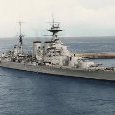Leaderboard
Popular Content
Showing content with the highest reputation on 06/12/21 in all areas
-
About 10 years ago I came across a picture I saw a lot of in my youth as an Air Cadet. I decided it would make a great project one day and set about sourcing the 1/72 scale kits to complete the task. It took a while but with a little help from a couple of friends, I managed to get hold of all but one of the kits. The Jetstream. I had got hold of the old Airfix one but could never manage to find the conversion set. Lucky for me A Model released a kit of the Jetstream T.1 back in 2018 and managed to get hold of one. Now I just needed the time to do it. 2020, Lockdown. I was furloughed in the first few days and suddenly found myself with some time on my hands and so the build began. After 18 months of on and off building, the project is now complete. The 1/72 Chipmunk T.10, Hawk T.1, Jet Provost T.5, Dominie T.1, Gazelle HT.3, Bulldog T.1 and Tucano T.1 are all from Airfix. The Wessex is the Italeri 1/72 H-34 kit with the Heritage Aviation HC.2 conversion set. The Jetstream T.1 is the A Model kit with Xtradecal decals. Paints used were Humbrol, Tamiya, Gunze Sangyo (Mr. Color) and Xtracrylix acrylics Enjoy.30 points
-
Made for a Mosquito GB at UAMF, this is the Tamiya 1/48 DeHavilland Mosquito NF.XIII kit, completed as an NF.XIX of 89 Sqn, Baigachi, India, 1945: In this case, I wanted something different to the run-of-the-mill grey/green UK-based night fighters. A little research showed that a small number of Mk.XIXs were shipped to the Far East to act at night intruders. These were mainly operated by 89 and 176 Sqns from Baigachi airbase just east of Calcutta in India during the last few months of WWII. There's a full-colour profile of one such machine in the Paul Lucas book, de Havilland Mosquito Day and Night Fighters in RAF Service 1941-1945 (SAM Combat Colours №6). This is TA230, letter N, of 176 Sqn - see also this photo of TA230 from the long out-of-print James Halley book, The Squadrons of the Royal Air Force: Due to The Pandemic, the British Public Records Office is allowing free downloads of materials, so I was able to get the Operations Record Book for 176 to try to find out more. What I found was that it has two lists of serials of the Mosquitos it used, but TA230 was not one of them, nor apparently did the squadron code any of their machines 'N.' So I downloaded the records for 89, as the squadrons were co-located for a short period. While that squadron doesn't have any serial lists, it does have some references to individual code letters, and N is one of them. So I feel that this is a case of misidentification of the squadron. Of course, it's Tamiya, so good fit, simple build and the only aftermarket were the crew harnesses and the resin wheels. I'm pretty pleased with the outcome.30 points
-
Hello everyone. Test assembly of the novelty. Dutch service in Ost India (MN-KNIL), Java, 1941.23 points
-
Hi there Here are some pictures of my 1/72 Westland Wasp. Some build pictures can be found over in the RFI section but I’m not very good at posting links. This started life as an Airfix Scout and used a Tasman vac form canopy and the Air Graphics converion and decal set. The Air Graphics stuff is brilliant. Here is the Wasp: By the the way, it is very small. Regards Toby22 points
-
Here is the Revell Fokker 100 finished as G-UKFI of Air UK circa 1999. The real G-UKFI was delivered to Air Europe in 1989 and joined Air UK in 1993. She later became PH-OFI of KLM and retired in 2009. The Revell kit was issued in 1995 and has been off the market for some time. Revell tend to re-issue their airliners at odd and unpredictable intervals but I’m not sure if we’ll see the F100 back. My kit was from the original KLM/Swissair boxing but even so the moulds were starting to wear and there was a lot of flash and consequent cleaning up. The final (Helvetic) release suffered from very badly moulded engine halves and if Revell do ever re-issue the kit I hope they fix the moulds first. Flash aside it was a straightforward build. The locating pegs for the wings are wrongly positioned. If left unmodified they throw the wing incidence out and give the model an incorrect step on the underside. (Thanks to @Viking for pointing that out). It’s an easy correction but (obviously) has to be done at the building stage. I added some parts from the Extra Tech p/e set but since all my models are built in “gate” configuration I decided against using the open thrust reversers! Paint is overall Halfords white with Tamiya and Revell metallics. Decals are by RichW. Richard has done a good job with the livery but there is quite a bit of nipping and tucking needed around the fin and rear fuselage. The fin decals don’t wrap round the leading edge or over the top but Revell Aqua 54 is a close match so touching up is straightforward. Windows are by Authentic Airliners. Detail decals came from the kit sheet and the spares box. Thanks for looking and constructive criticism is always welcome. If all goes to plan there should be a second Air UK model along in the next few days. Dave G18 points
-
Several posts ago some members kindly said they would like to see some more of my big Russian builds. So as I havn't finished anything lately here is another, my Amodel Mil-10 made a while ago. Once cleaned up the parts fitted together really well, just as well as some mainstream kits in fact. The tray and U/C assemblies were by far the most complicated areas of the build. All the strut parts were drilled and pinned with brass rod for extra strength. The rotor head, tray and wheels had the hydraulic lines and electrical leads added in wire and miniature solder. The grab rails on the engine cowlings were replaced with scratch-built items from plastic rod. The strenghthener cable attachment points on the roof and front legs were replaced with soldered brass rod structures. The aircraft depicted was used in Afghanistan, so I gave it a dusty BMP (ICM) to carry on the tray. One picture shows a 1/72 pilot figure to emphasise the size of the helicopter (its huge! The models rotor disc is almost the same size as a 1/72 Vulcan). The simple scheme was done with Humbrol paints, weathered with Flory wash and dirty thinners. If you’ve got one in your stash it’s a great project to get stuck into, I can thoroughly recommend it. Hope you like it. 1/72 russian pilot (must paint him sometime) as he gives a good indication of the size of the thing. Thanks for looking Pete17 points
-
Hi All, Here is another bird completed this year. In fact I finished this one back in August but have not made a photosession until yesterday. So here it is - Fouga Magister in IDF demonstration team colours: Not much to say about the prototype as its history is pretty well-known. A training aircraft that flew with numerous air forces for many-many years as a basic trainer. In IDF though it made quite a career serving not only as a trainer but also as an attack aircraft and a demonstration team airplane and was further upgraded to Tzukit standard with updated avionics, engines, etc. The kit used is a newly released Special Hobby option. Overall a nice kit with impressive level of details in cockpit, undercarriage bays, full engine details are also provided. Fit is good but tight at times. Pay attention to cockpit as after closing the fuselage you may find out that the canopy is too narrow. Cockpit interior needs to be carefully trimmed to make sure it does not stretch fuselage sides. Also I would advise to start canopy attachment with front and rear sections, then install two-part middle section and finish with opening sections which you may trim as appropriate if they do not fit. More construction details are available at the WIP thread. Very minimal aftermarket sets were used - resin wheels from CMK (although kit wheels are not at all bad either), seat belts from spares and that is it. And I do not think I made any substantial improvements either as the kit looks very convincing out of the box. The kit I had was for exotic African Air Forces but my intention was always to make an Israeli machine, so an Isradecal set for Fouga Magisters was bought. That one unfortunately was a disappointment almost ruining the whole project... Large white decal stripes turned out extremely brittle. While I was able to deal with them on flat surfaces, on curved area around V-tails that broke apart and in fact did not fit the area well too. Particularly poor result is on port side where I had to overpaint cracks with white paint and still not super satisfied with outcome. Paints used are Hobby Colour blue H328 (FS15050) well diluted with white - I tried to be as close to the blue colour of Stars of David, obviously black, white and silver from Vallejo and lastly H318 tan for undercarriage interiors. I was matching this to the photoes of real French Magisters and that seemed to be the closest match. Final finish with Gloss Tamiya clear. Now there are couple more shots "with others". My full IDF collection firstly: And all the bright jet trainers secondly: Hope you like it Kind regards, Dennis17 points
-
A 1969 Monogram classic, as reissued by Revell in 2011: the 1/72 scale Dornier Do17Z, affectionately known to Luftwaffe pilots as the Fliegender Bleistift ('Flying Pencil'). Designed (under the restrictions on German aviation imposed by the Versailles Treaty) as a high-speed mail plane, its production was officially greenlighted by the new (Nazi) German Aviation Ministry in 1933 as a "freight aircraft with special equipment"...in other words, a bomber. First blooded in the Spanish Civil War...where its speed and nearly fighter-like handling endeared it to German pilots...the type formed the backbone of the Luftwaffe's bomber force through 1940, when it began to be supplanted by the more-capable Ju88. Kit-supplied decals mark a machine of the staff flight of 2./KG 3 "Blitz" in January 1941, operating from the Dutch airfield at Deurne. Only a few months later most of the Kampfgeschwader would be transferred east to support Operation Barbarossa, and remain there until the unit was dissolved in 1944. The unit's 3rd Gruppe would be an exception: the last unit in the Luftwaffe to operate the Do17, it would then transition to the He111...its new a/c to be used as delivery platforms to launch V-1 flying bombs against the United Kingdom during Spring and Summer, 1944. Enjoy!17 points
-
Here is my completed BF-108 from Eduard 1/32 using the Profi kit and decals from the weekend kit This supplied plenty of etched and a resin prop to add lots of details The only after market addition was a new set of Eduard resin wheels Painted using AK real colour lacquers Luftwaffe pre WW2 set It was a straight forward build except for the decals all of which were the pull the film off once fitted type A very enjoyable build15 points
-
Hello fellow modelers, I've just finished the Special Hobby Reggiane Re 2000 in 1/48 scale. Re 2000 was probably the best performing fighter of the Italian "0" series but for some reasons Regia Aeronautica preferred the Macchi MC 202 and the Fiat G.50. Also the name "Falco" (Hawk) was never officially accepted in Italy also because this was already the name given to the Fiat CR42 biplane. Only a squadron in Italy was equipped with this first series of Re 2000, all the others went to Sweden and Hungary. The kit is not too bad, with just all the typical issues of Special Hobby kits. I've built it basically OOB just adding Eduard seat-belts and few other scratch-built details. For painting I've used Tamiya acrylics for lower surfaces and LifeColor acrylics for the upper surfaces (good ones but not as Tamiya). Enjoy pictures and please feel free to give your comments and feedback. Cheers Andy15 points
-
Here's my Tamiya F-16C in the Lizard (or is it flogger) Viper scheme. I used Afterburner decals. SMS and Mr Color paints. There is a full build report here and a lot more photos of the finished build here . I did do a set of images without the stick but I thought it looked a bit weird just hanging there in space so all bar one are of it with the stick. Anywhere here's a few images of the finished aircraft.14 points
-
Hello again It's been long time since my last post and my last model - it's been 4 years! Time flies indeed. Anyway, finally got some time during this whole pandemicmonium to do some modelling again. Here is my latest I've just finished: Kawasaki Ki-61-Id Hien. Model: Tamiya 1/72 Foliage: Banana trees made of aluminium foil, wire and masking tape; static grass combined with lichen, turf and jute fibers Barrels & crates: resin copies of some I've found on eBay using method from this post Crew: Japanese Army Pilots & Crew from RedBox Here are some photos: And some untouched ones: Thanks for viewing!14 points
-
14 points
-
British 8th Armoured Division was shipped off from the UK in 1942 as a floating reserve, not knowing if they were going to be deployed to the Far East or the Middle East. It was a time when just about everything was going wrong, with the Japanese threatening Australia and the Germans winning in North Africa. In the end, the division was disembarked at Suez and broken up. Its two Valentine equipped armoured brigades (23rd and 24th) were strengthened and formed into separate brigade groups, to be allocated as required. 23rd Armoured Brigade was given little chance to acclimatise and immediately thrown into action against Rommel during the 1st Battle of Alamein in July 1942. In a gallant but futile assault on Ruweisat Ridge (Operation 'Splendour') the brigade was destroyed, losing almost a hundred tanks to mines and anti-tank gun fire. Half their crews were killed or wounded. My model depicts one of the Brigade's tanks - 'Mohawk', which was part of 'C' Squadron, 40 RTR. The division's tanks arrived already painted in Light Stone. It wears the 'GO' formation sign for the 8th Division, although I've employed a bit of artistic licence as the badge was overpainted on most tanks, including this one. Tamiya's kit is an absolute gem and a delight to build. The crew figures are excellent too. I just added some aerials from stretched sprue. The decals are from a set by Echelon. I used Tamiya paints throughout, and weathering was carried out with oils, pigments and pencils. The effect is subtle but, sadly, most of these tanks didn't survive long enough to get really knocked about.13 points
-
Some touch up required. Before: After: [Edit: goodness gracious that paintwork looks rough!!] I did end up making the Airfix struts out of scrap plastic. The horribly mismoulded kit struts could be carved down into something delicate and scale-like. I’ve also come to realise that the Academy and ESCI exhausts are a bit too spidery, and (apart from being the wrong scale) I’m gaining respect for the Revell offering. Anyhow, tonight’s family photo, with the Revell a gnat’s away from rigging: Those of you familiar with my build habits will notice that once again the nicest kit is lagging behind!12 points
-
Howdy all, I've concentrating my recent efforts on the beaching gear for the big Sunderland - I was for a while considering a water diorama but then it occurred to me that I don't have a 5ft by 5ft display area so wheels it is. I love the challenges kits of this nature bring and the research that needs to be done as it always throws up so much information about a particular aircraft. It looks as if there were three distinct types of beaching gear, all with their subtle differences, and that does not include all of the different float, wheel and tyre combinations. The version I photographed at Solent Sky looks to be either very late or post-war, therefore not suitable for an earlier MkII of around 1941 vintage. It seems they were painted differently too - some left in natural metal and others in anti-rust red. Strength is a must on such a large model, and I did consider using a brass core but my soldering skills are not up to the job. Instead, I raised my stash of spare sprue and found some really chunky parts from the HK B-17 kit and used these as a starting point to form the core of the beaching gear. I used a perpendicular junction point as this provided a very strong 90-degree angle for the main strut and axle without having to worry about the joint failing at any time: Over a few sessions I then built up the external structure with plastic card, Evergreen and more sprue and detailed them according to references: The rear beaching gear is a more complex affair and is a sturdy box-like structure with a cradle for the rear of the hull to rest in: Here are the main components ready for a trip to the spray booth: I've decided to go for anti-rust red as it'll add a splash of colour. After the base-coat they have received a light wash and some rust streaks etc - the real things got terribly battered so I may add some more at a later stage: These then slot snugly on to the forward fuselage: And under the rear of the hull: You'll notice a distinct absence of wheels at this stage - a friend is kindly helping me out by designing and printing me a set that will be added in due course. Here's an early screen shot of how they'll look: And now here we are: sitting proudly on it's own three legs and waiting for the next stage of detailing. For some reason, my cat never looks impressed with my models - she must get that from the wife! Until next time, Tom12 points
-
Here is my latest kit, finished earlier this week. It's Kami de Korokoro's 1:144 Brewster F2A-3P Buffalo finished as "MF-17", BuNo 01521, flown by 2nd Lt Charles M. Kunz, of VMF-221, USMC, on June 4th, 1942, during the Battle of Midway. He shot down two Japanese aircraft and was one of only three F2A-3s to return to base, despite being wounded and with the aircraft damaged from enemy fire. This was a poorly-moulded resin kit. I opened up the cockpit and corrected the rear shelf, adding scratchbuilt details. I removed the framing from the middle of the main canopy as this variant didn't have it. The engine cowling, propeller and tail wheel were lost causes and I replaced them with spare parts from a Mark I Buffalo kit. I had to modify the propeller since this variant didn't use a spinner. The radio masts and wires and the wing pitot were made from stretched sprue. The kit was fully painted and varnished with brush. The kit's decals were useless and anyhow I wanted a Midway machine so I used the markings from a Warbird Decals sheet and the code, minus the "M" which was painted, from one of the Mark I Buffalo boxings. Although far from perfect, I am pleased I managed to make something rather decent from what came in the bag. Thanks for looking and all comments are welcome. Miguel11 points
-
My son caught this shot the other day. You the missus pays big bucks for a pedigree animal & this is what you get? I mean, really. Jonsey, not at his best. Steve.11 points
-
This build is a bit more chaotic than usual for me. I normally try to have a loose plan of action but with this thing I just seem to be blundering along and discovering problems as I go. Got the commanders cupola finished. The result is not up to 'anorak' standard as I decided near enough will probably do on his build! Also got the hinges fitted to the main hatch. This was a little challenging as my ref pics are not clear but some photo manipulation on my Mac and a bit of guess work seems to have resulted in something that is close. All the top shots I have of the hatch are from the front which has it obscured by the commanders hatch! I then moved on to the fire handles and side bins. At that point I realised that the external fire extinguishers - of which there are three - are all of the modern 2kg dry powder variety. I slight problem as I seldom build anything this modern so my spares box only turns up BCF, carbon tet and the earlier 1kg powder bottles. So I will have to make some extinguishers and can't fit the forward bins until I have them so I can pin them to the bins! Anyway here it is as of today. About to box it up and try to get the final assembly/weathering on the Conqueror done this week.10 points
-
Almost from the box - just Master guns and Eduard belts. Paints are Gunze Dark Green and Dark Earth 50:50, bottom Silver Leaf by Tamiya. G-22 was piloted by Sgt. Denys Rolin on May 11, 1940 escorting Belgian Fairey Battles during their attack on Albert Canal bridges.9 points
-
9 points
-
One of those satisfying weekends this time around where it feels like you've broken the back of a job. Yes, the foiling is all done apart from the interior mirror I hadn't realised until I've finished the foil just how much it defines the side window shape. The shell has always looked like an XJ-S, but it just looks much sharper now. Then, just when I thought I'd finished it all, I decided that the chrome pen for the rear chrome trim wasn't cutting the mustard and so decided to foil that too. The very thin strip across the boot was particularly difficult - not 100% satisfied with it but its as good as I can get. I also sanded off the JAGUAR lettering with 6000 then 12,000 Micromesh, again not 100% satisfied but reasonably happy with the result. The Jag fans may notice I made a bit of an error with the boot - somehow managed to misread both the instructions and reference material but far too much risk of damage if I try to rectify things. I also had a go at creating the reversing lights in the foiled areas by masking around, then giving it a coat of matt then gloss clear. I should have stopped at matt as the end result is almost invisible; guess I'll know for next time. Separately I also moved on a bit with the chassis. The wheels have been the latest thing to slow me down, with steel paint needed for the gaps between spokes and a small line just outside that, not to mention the various nuts etc. Happily two are done and the tyre treads sanded back and tyres fitted. Just a shame the steel doesn't really show - maybe I should have gone for a less accurate gunmetal colour to make that work more visible! And then it was just a case of fitting all the interior and other bits onto the chassis. I think the firewall maybe should lean back a bit more that I've done it, but it's close enough. And the washer bottle and brake server really have pretty rubbish guide points for installing - I think they're in the right place and orientation but it would be very easy to install them differently, particularly the brake booster. So that's where I am now, thanks for looking.9 points
-
Hi all, some pictures of my latest build, the Eduard Tempest Mk.II in 1:48. Add the Brassin Flaps (3D print), the rest is OOB. Built a German based No 16 SQN airfcraft from RAF Fassberg8 points
-
This one has been my labour of love over the past few weeks. This kit was also the first I have created a work in progress topic for, which can be found here: Anyways, the kit itself from Hasegawa is good & could be super detailed if you felt so inclined. I was happy with a mostly out of the box build, adding only some Eduard belts & resin MG's in the nose. The fit was ok, needed some test fitting & some adjustment but nothing to over the top. Hardest part was the canopy, which was squished and did not fit the opening at all. I was able to get it back into shape with some hot water but there are some slight stress marks in the plastic. Brake lines were also added to the landing gear as well as ignition wires to the engine using fine copper wire. All markings were painted on using self cut masks, the only decals used were the cockpit IP & a few stencils here and there as well as the red stars over the wing cannon. The paintwork has all been fully painted with SMS paints, the underside being Super Silver & the topside is my custom mix of "Ohryoku nana go shoku" or Khaki Drab. Tamiya panel line wash was used to help bring out the tones & the Tamiya weathering pastels were used for the exhaust staining. The Aircraft depicted here is #47 which was captured after the war on Ashiya Airfield, near Fukuoka in September 1945. It was an early build Ki-100, being converted from an existing Ki-61 airframe, something I wanted to show through the cockpit & airframe stencilling & well as the paint fade & weathering Enjoy 😀8 points
-
Hello Everyone, Just completed the second aircraft of my Swedish duo build project - SAAB J32B Lansen this time: Here is the WIP link: The Lansen was a great achievement of Swedish aircraft industry. Project started in late 40s and the first production aircraft started to join Flygvapnet in late 50s. The project pioneered in many aspects: the first aircraft designed with heavy use of computer supported mathematical computations, the first Swedish supersonic aircraft. Lansen was designed to carry advanced radar which was making it an all-weather machine. Attack version was capable to carry one of the world's first cruise missiles. The kit that I used is the Tarangus kit which is a short-run kit and has been released fairly recently. I guess the molds were actually produced by Sword as could be judged from the bluish plastic and very familiar quality of molds (nicely detailed surfaces with delicately recessed panel lines but at the same time quite softish smaller bits). Fit was reasonable although with short run you should expect a lot of dry-fitting. Main surprise in this case was the canopy which literally jumped at its place - not always happening with Sword products! The list of improvements to the kit included: - improved cockpit interior with Maestro Models p/e set, some scratched parts, added brake handles to chairs from wire, reshaped operator's windscreen to make curved angles - improved some other areas with Maestro p/e - exhaust, wing fences - made airbrakes from Maestro p/e - these cannot be modelled opened from the kit - cut the airbrake openings and scratchbuilt interior for airbrake bays - decorated main wheel bays with pipes and wires - reassembled front wheel - this is a single part in Tarangus kit but its shape was very poor - not straight at all, a bit simplistic. - drilled openings here and there - guns, intake on fuselage side - made transparent navigation lights - replaced kit's pitot with the one from Master - replaced Sidewinders with those from Hasegawa set - added resin missile pods from Maestro Models Painted in Green wraparound scheme. H309 Hobby Color green is used. Leading edges and gear bays interior are vallejo dull aluminum. Bottom rear fuselage is dull aluminum with some gun metal added, black radar covers, undercarriages struts are from green-black mix to match dark emerald green colour on actual aircraft. Decals are from the kit. No problems with their quality at all. Some technical stencils are present but just a handful of those. I chose a colourful scheme with Ö68 red squares from the late sixties. The aircraft is from F12 wing which was based in Kalmar. Some dirt and stain added on flaps, fuselage underside, exhaust pipe etc. Finished with Micro Satin acrylic lacquer. Transparent parts are covered with Future. Weapons installed are not green dummy training options traditionally seen on Swedish aircraft but are warheads which seemed to be natural metal for missile launchers and standard AIM-9B scheme for Swedish made Rb24 missiles. Now some tasty pictures "with something else". Firstly my full Swedish collection: Next are some photoes with Lansen's peers. Hunter with same Avon engine: F-101B which was an American version of an all-weather aircraft (and Lansen could have carried nukes too!!! - it's just Sweden never progressed with its nuclear program): Sizeable aircraft Lansen was! Not lost next to a huge Voodoo And lastly with the Hun which is very close dimensionally to the Lansen: Hope you enjoyed All the best! Dennis8 points
-
Not a very conventional ship. And one that had quite a short life, commissioned in 2008 and decommissioned 2021 and from what I've read it was plagued with problems. That said it does look good with nice lines and it does stand out in 'dazzle' camo. The paint used was the excellent Colourcoats. I didn't, on this occasion, have to add any PE as Bronco had included it all. I do wish more manufacturers would do this. I hope you enjoy the following few pictures, its not my best, but I think I'm improving. Jon8 points
-
Hello chaps, tome to return to the Bishop now some other stuff is finished. This is where I left you with the hull all but done, time to turn to the gun housing. I have seen a couple of 1/35 builds of the Bishop and have noticed how much detail is in the gun housing, I wonder if this can be done in 1/72, after all, the rear doors will be open? Managed to get the main blocks in on the starboard side; tool box, cartridges in their storages, radio, case. Needs a little tidy up, then I'll move over to the port side. Stuart8 points
-
This is my latest Zvezda snap fit kit, most enjoyable, anyway hope you like.8 points
-
So I've been abandoned by the mrs and am completely clear til 2300hrs tonight, so I can crack on a bit! A tactically placed pin mark on the gun crutch....... The Ederwooda etch has the rear track guard too wide, so I had to cut it back. Fortunately the point at where it needs cutting back is where the etch line is scribed in the brass for the angle/bend, so a bit of wiggling about and the gash piece came off easily. The kit guards are not the best I'm afraid. That's the first bin complete. Quite pleased with the etch which is actually pretty goo. The lower handle is a teeny bit big, which I can live with (the OCD is strong in this one). The handle at the top of the bin is supposed to be one of the handles on the turret, but they are way too small. It is however a good side for the straps that are included in the Ederwooda etch set. I'm a bit stuck on the turret handles so went with the InAccurate Armour tie downs, which isnt the best solution. I may come back to them if I can see anything more suitable in my box full of old/spare etch. Time to have a look at that glacis plate. I've been ignoring it since starting the build, but I'll have to bite the bullet and sort out the 1mm gap along the bottom where it joins the hull. There should be a weld line there which is missing. Not sure if there is one on the AFV club kit either. Overall impressions of the Amusing Hobby Cent are I'm a tad unAmused with it. Its a new release and its not cheap. With the quality of kits being released today, they should have deffo done a better job on this. I will not be eager to start the AVRE in a hurry. Only one thing to do in a situation like this. Poached eggs on Avocado on toast for lunch. Shame its no wine o'clock yet.....8 points
-
Hello dear friends, Here is something new and very special, but also far from over... DIRTY DANES - Royal Danish Air Force DARK GREEN COLD WARRIORS RDAF began to paint its aircraft in the standard colour known as SM/67, olive green (matt), during late the 1960’s. Even though it is finished in just one color, the paint faded quite rapidly and unfortunately gave the aircraft an untidy appearance, although they were in fact very well maintained. The weak matt paint durability problem was solved during the late 1970’s when aircraft were re-painted in an extremely gloss variant of the same colour, but this clearly reduced the camouflage efficiency due to the monotone high shine of the aircraft surfaces. This set will give you options to build almost any Dark Green aircraft in Danish service, but there will be 7 very special subjects - zapped Danish warriors. ‘Zapping’ is an old tradition among air forces, where a graffiti, slogan, sticker or emblem is applied to another units aircraft, in the spirit of rivalry and humour. Some countries removed the ‘Zaps’ as soon as possible, but the Danes had a sympathetic & tolerant perspective on the practice. Some ‘Zaps’ have been present on Danish aircraft for many years. Special thanks to Jens Jensen for the generous support and information. Because of this COVID situation and many other problems, there is no exact date when these sets will be available and price is not determined yet. http://paulusvictor.com7 points
-
Hi to all I would like to share with you the first model done from our current proyect. It have started the research in march 2021 when I came across Buz Craig and Carl Vincent. They have helped me in a way that exceeded my expectations. They have been sharing their knowledge with us with a lot of patients on a daily basis. I do not have enough words to thank them. As I did in similar previous projects. I have done a folder with a summary of each aircraft with all the related photos and information. This makes the building process easier and reduces the number of mistakes. This is the list of aircraft that we are going to include Mark REFERENCE Serial code letter Squadron Pilot Place Time 1 RAF Tomahawk I Tomahawk BK853 - AAE&E UK 1-nov-40 2 RAF Tomahawk I Tomahawk AH767 - 400 RCAF UK 3 RAF Tomahawk I Tomahawk AH771 - 400 RCAF UK 1-oct-41 4 RAF Tomahawk I Tomahawk AH860 RM-F 26 Gravesend 1941 5 RAF Tomahawk IA Tomahawk AH973 - 1940 6 RAF Tomahawk IIA Tomahawk AH893 RM-D 26 UK June/July 1941 7 RAF Tomahawk IIA Tomahawk AH830 RM-A 26 UK 8 RAF Tomahawk IIA Tomahawk AH903 RU-Z 414 RCAF UK 9 RAF Tomahawk IIA Tomahawk AH895 SP-B 400 RCAF UK 1-ago-41 10 RAF Tomahawk IIA Tomahawk AH945 XV-W 2 RAF 1-sep-41 11 Desert Tomahawk Iib Tomahawk AK367 C Fayid Airfield septembre 1941 12 Desert Tomahawk IIB Tomahawk AK490 Amriya septembre 1941 13 RAF Tomahawk IA Tomahawk AH852 0 414 RCAF UK 1-mar-43 14 RAF Tomahawk IIA Tomahawk AH899 PB-F 1683 Bomber defense Training Flight Market Harborough 1-may-44 15 RAF Tomahawk IIB Tomahawk AK184 at Hamble, Hampshire 1943-1944 16 RAF Tomahawk IIB Tomahawk AK122 BT-H 1686 FLT 1944 17 SAAF Tomahawk Iib Tomahawk AK431 ED 73 OTU Libia 1942 18 SAAF Tomahawk Iib Tomahawk AN311 TA-C 2 SAAF 1-nov-41 19 RCAF P40 H-87A-3 P40 E 1071 A 14 Squadron Umnak Island summer of 1943 20 RCAF P40 H-87A-3 P40 E AK857 VW-H 118 Squadron RCAF Annette Island, Alaska October 18, 1942 but not before June 21, 1942 21 RCAF P40 H-87A-3 P40 E 1052 D 111 Squadron RCAF Umnak Island May 2 to June 12, 1943 22 RCAF P40 H-87A-3 P40 E AL194 V 111 Squadron RCAF Fort Greely, Kodiak Island, Alaska 19-abr-43 23 RCAF P40 H-87A-3 P40 E AK815 VW-T 118 Squadron RCAF Annette Island, Alaska October 18, 1942 but not before June 21, 1942 24 RCAF P40 H-87A-2/3 P40 E AK940 LZ E 111 Squadron RCAF mountains of Alaska. Summer 1942 25 RCAF P40 H-87A-3 P40 E 729 C 1944 26 RCAF H-87A-2CU P40 E 1076 27 RCAF P-40 E P40 E 1057 B 132 Canada 1943 28 RAF Kittyhawk Mk I P40 E AK571 - 23-abr-05 29 RAF Kittyhawk Mk I P40 E AL229 - AAE&E Uk 1-abr-42 30 RAF Kittyhawk II (P-40F-CU) P40 F FL220 Uk 1-ago-42 31 RNZAF Kittyhawk Mk I (P-40E-1) P40 E ET604 No Code nil Hobsonville late May/Jun 1942 32 RNZAF Kittyhawk Mk I (P-40E-1) P40 E NZ3008 14 SQN RNZAF 33 RNZAF Kittyhawk Mk I (P-40E-1) P40 E NZ3027 FE-V 10 January 1944. 34 RNZAF Kittyhawk Mk I (P-40E-1) P40 E NZ3036 HQ-Q 35 RNZAF Kittyhawk Mk I (P-40E-1) P40 E NZ3038 JZ-A 15 Howick 1943 36 RNZAF Kittyhawk Mk I (P-40E-1) P40 E NZ3043 FE-B 2 FOTU 1/01/1944 (with 2 FOTU for sometime) 37 RNZAF P-40E-1 ex 68FS P40 E NZ3094 Servicing Unit, New Georgia 38 Desert H-87A-2CU Kittyhawk I P40 E AK673 GA-F Gazala 2 Februrary 1942 39 Desert H-87A-2CU Kittyhawk I P40 E AK739 FZ-R 94 20-mar-42 40 Desert H-87A-2CU Kittyhawk I P40 E AK919 LD-B 250 Sqdn. Ldr M.T. Judd 1-ago-42 41 Desert H-87A-2CU Kittyhawk I P40 E AK961 CV-0 3 RAAF Squadron Amartya, Egipt 1942 42 Desert P-40E-1CU (Kittyhawk Ia) P40 E ET789 GA-G 112 RAF 43 Desert H-87A-2CU Kittyhawk I P40 E ET611 North Africa 1-jul-42 44 Desert P-40E-1CU (Kittyhawk Ia P40 E ET790 GA-? 112 RAF Sqdn. Ldr Billy Drake El Daba 1-jul-42 45 Desert P-40E-1CU Kittyhawk Ia P40 E ET953 CV-V 3 RAAF Squadron 46 Italy H-87A-3CU P40 E AK886 OK-R 450 RAAF late Jul 1942 47 SAAF H-87A-2CU Kittyhawk I P40 E AK702 KJ-J 4 SAAF F/O W.P. Pictorius Feb and April 1943 48 SAAF H-87A-2CU Kittyhawk I P40 E AK840 DB-K 2 SAAF Jul/Aug 1942 49 RAAF P-40E-1 P40 E A29-118 FA 82 Squadron Bankstown late 1943 50 RAAF P-40E1 P40 E A29-83 2 OTU 51 RAAF P-40E1 P40 E A29-148 76 Squadron Flt John Meehan sep-42 52 RAAF P-40E1 P40 E A29-75 76 Squadron 1942 53 RAAF P40 E P40 E A29-78 54 RAAF P40 E P40 E A29-82 55 RAAF P-40 E-1a P40 E A29-85 CD-E 2 OTU Mildura 1-ene-45 56 RAAF P-40E1 P40 E A29-129 2 OTU 1942 57 RAAF P-40 E P40 E A29-133 FA-B 82 Squadron Bankstown oct-43 58 RAAF P-40 E P40 E A29-806 AM-V 77 Squadron 1944 59 Desert P-40F-CU (Short tailed merlin powered) P40 F FL234 HS-A 260 SQN 60 Desert H-87A-2CU Kittyhawk I (fin fillet) P40 K short tail EV322 CV-I 3 RAAF Squadron 61 RCAF P40 K-1-CU Mark III (Short tail) P40 K short tail 245945 F 111 Squadron RCAF Elmendorf Air Base 3-sep-42 62 RCAF P40 K-1-CU Mark III (Short tail) P40 K short tail 246004 S 111 Squadron RCAF Amchitka Island summer/ fall of 1942\ 63 RCAF P40 K-1-CU Mark III (Short tail) P40 K short tail 245951 A 111 Squadron RCAF Amchitka Island summer/ fall of 1942\ 64 RCAF P40 K-1-CU Mark III (Short tail) P40 K short tail 245954 G 111 Squadron RCAF Amchitka Island summer/ fall of 1942\ 65 Desert Kittyhawk III (P-40K-1CU) (Short tail) P40 K short tail FR241 LD-R 250 SQN 66 Desert Kittyhawk III (P-40K-1CU) (Short Tail) P40 K short tail FR338 GA-? 112 RAF 67 RAF P40 K (Short Tail) P40 K short tail FL891 8 68 SAAF P-40E-1 (fin fillet) P40 K short tail EV421 DB-H 2 SAAF 69 RAAF P-40 K (Long tail) P40 K long tail A29-182 AM-C 77 Squadron New Guinea 1943 70 Italy P-40 K (Long tail) P40 K long tail FR507 OK-REB 450 RAAF R.E.Bary Grottaglie Italy 4th October 1943 71 RAAF P-40M-1CU (Long tail) P40 K long tail A29-302 86 Auguts 1943 72 RNZAF Kittyhawk Mk I (P-40K-15) (Long tail) P40 K long tail NZ3050 HQ Gunnery Training school Ohakea 1944 73 RNZAF Kittyhawk Mk I (P-40K-15CU) (Long tail) P40 K long tail NZ3060 9 14 Guadalcanal 1-jun-43 74 Italy P-40L-5CU P40 L FS490 BAE 3 RAAF Squadron WGCDR Brain Eaton Italy 75 RAF P-40L-5CU P40 L FS452 5 Takoradi 76 RCAF P40 M-10 P40 M 837 77 RCAF P40 N-1 P40 M 851 Dartmouth, Canada early 1945 78 RCAF P40 N-1 P40 M 855 F 133 Patricia Bay 1944 79 RCAF P40 N-1 P40 M 831 C 132 80 SAAF P40 N-1 P40 M 5055 D 81 Italy P40 M-5 P40 M FR806 GA-Q 112 RAF 82 Italy P40 N-1 P40 M FT859 OK-L 450 RAAF S/Ldr. Jack Doyle Fano 1945 83 RAAF P40 N-1 P40 M A29-495 Piva North sep-45 84 RNZAF P40 M-5 P40 M NZ3067 FE-H 67 85 RNZAF P40 M-5 P40 M NZ3070 14 RNZAF Station, Whenuapa 86 RNZAF P40 M-10 P40 M NZ3118 14 Kukum Field, Gudalacanal 1-jul-43 87 RNZAF P40 M-10 P40 M NZ3119 88 RNZAF P40 N-1 P40 M NZ3121 4 Servicing unit Ondonga, New Georgia 89 RAAF P40 M-5 P40 M A29-323 SV-F 76 Squadron Momote, Los negos abr-44 90 RAAF P40 M-5 P40 M A29-357 SV-H 76 Squadron 91 RAAF P40 N-1 P40 M A29-412 5 squadron Piva sep-45 92 RCAF P40 N-20 P40 N 867 PN 5 OTU RCAF Boundary Bay, British Columbia late 1944 93 RCAF P40 N-20 P40 N 877 T 132 Western Air Command RCAF Tofino, British Columbia early 1944 94 RAF P 40N P40 N FX594 - Uk 95 SAAF P40 N-5 P40 N 5077 R 11 OTU Isipingo 24-3-44 96 SAAF P40 N-5 P40 N B 11 OTU 97 Italy P40 N-5 P40 N FT943 OK-R 450 RAAF F. Lt. Ray Goldberg Cutella Feb. 1944 98 Italy P40 N-5 P40 N FX515 OK-K 450 RAAF San Angelo May. 1944 99 Italy P40 N-20 P40 N FT928 OK-L 450 RAAF S/Ldr. Jack Doyle Cervia 1945 100 Italy P40 N-20 P40 N FX666 CV-Z 3 RAAF Squadron late 1944 101 Italy P40 N-20 P40 N FX660 CV-W 3 RAAF Squadron late 1944 102 RNZAF P40 N-20 P40 N NZ3253 T -29 4 FOTU 103 RNZAF P40 N-20 P40 N NZ3267 45 Ardmore 1945 104 RNZAF P40 N-25 P40 N NZ3283 Nil code 4 FOTU New Zealand 1945 105 RAAF P40 N-5 P40 N A29-531 2 OTU Oakey 1945 106 RAAF P40 N-20 P40 N A29-650 107 RAAF P40 N-40 P40 N A29-1208 3 AD Amberley 1945 108 RAAF P-40N-15 P40 N A29-558 HU-N Morotai ene-45 109 RAAF P-40N-35 P40 N A29-1005 GA-f 75 Squadron Circa abr-05 110 RAAF P-40N-30 P40 N A29-915 FA-diamont 82 Squadron F/Lt F,Schaaf Labuan sep-45 111 RAAF P-40N-40 P40 N A29-1140 SV-T 76 Squadron 1945. I was posting the building process here Here are the photos of the first P40 done. I hope you like it. 1) RAF Tomahawk I Tomahawk AH767 - 400 RCAF UK We estimated that this series will ocupied these 3 shelfs from our new display cabinet. Cheers Santiago7 points
-
Hi all, This is my contribution to the 453rd BG museum build. I volunteered to do a 4th FG Spitfire and Jim Clarey the museum’s curator sent me one of Tamiya’s venerable 1/48 Spitfire Vbs. The 4th FG was formed directly from the RAF Eagle Squadrons which took their Spitfire V’s with them when they became a USAAF unit in September 1942, and flew them until they were replaced with P47’s in about March 1943. Jim’s brief to me was that he’d “prefer a worn and weathered model, it fits in with the 4th FG exhibits I have in the museum, the more realistic the better.” Realistically worn and weathered? Talk about setting up to fail… Anyways I decided to build Spitfire Vb BM510 XR-A which was a 334th FS aircraft (formerly 71 Eagle Squadron). I chose XR-A for two reasons: Firstly because the IWM had a few good photographs of XR-A, the best of which is here with 2nd Lt Robert L ‘Junior’ Priser standing in front of her: And secondly because she was the aircraft of Major Gregory A ‘Gus’ Daymond who was the first CO of the 334th, between September 1942 and March 1943 and whose personal history nicely straddles the Eagle Squadrons and the 4th FG. Gus had flown Hurricanes and Spifires with 71 Eagle Squadron, shooting down 7 enemy aircraft (and adding another couple with the 334th), winning the DFC and Bar and eventually commanding 71 squadron as a RAF Squadron Leader. He would have been all of 22 years old when he was given command of the 334th. Gus also get many mentions in the book ‘War Eagles: The Story of the Eagle Squadron’ by Col. James Saxon Childers (first published in 1943). The IWM have some nice photos of Gus. As a RAF Squadron leader: And as CO of the 334th (alongside the CO’s of the 335th and 336th (formerly 121 and 133 Eagle squadrons): And here's one with him on the wing of a 71 Eagle Squadron Spitfire (who knows, maybe XR-A?) (credit to ‘War Eagles: The Story of the Eagle Squadron’): So. The WIP is here. The old Tamiya kit is showing her age (mid 90’s) now and she needed a bit of TLC - but that just made the build more enjoyable. A quick recap of what I did (and didn’t do) is as follows: What I didn’t do was correct any of the quite well known shape issues with the kit. They don’t stop it looking like a perfectly acceptable Spitfire and I wanted to concentrate on more noticeable stuff. What I did do was: Give her a new cockpit. Cherry picked a few bits from the Aires resin cockpit set, modified other bits for use, pinched some odds and ends from an Eduard etched set, scratched the rest and threw in some HGW ‘fabric’ seat belts. Plunge mould a new fixed rear canopy. Carve off the overwing U/C bay stiffeners and for good measure removed the oversized/incorrectly shaped wheel bulges and replaced them with home cast resin replacements. Change the wheel bay internal stiffeners from an ‘H’ to a ‘K’ shape to reflect the contemporary arrangement. Make use of the rather nice Master brass cannons, Eduard Brassin Resin exhausts (actually for the Airfix kit), Quickboost cockpit door (actually for the Eduard kit) and Quickboost rear view mirror. Cut off and pose the radiator shutter open and add the cannon heating pipework inside the radiator. Cut off and pose the tailwheel at an angle. Add the pipework to the undercarriage legs. Cut off and pose the rudder and elevators. And as to the painting and finishing: I mostly used Mig acrylics for the interior and Colourcoats enamels for the exterior. For the cockpit I used a mixture of pre and post shading, Flory wash and oils to hopefully bring the cockpit to life. For the exterior: I used Mig chipping fluid over Alclad aluminium to try and recreate the characteristic Spitfire worn patches. I didn’t pre-shade so much as apply several different colours to create a multi coloured marbled undercoat and then misted several light coats of the camouflage colours over the top. I then did several different stages of oil work to try and get the ‘realistically worn and weathered’ look Jim was after - trying to base it on photographic evidence and to err on the side of subtlety. I didn’t do an all over panel-line wash but restricted it to the moveable flying surfaces and the panels that were likely to be regularly removed and get dirty, like the engine and gun access panels. Decals were a mixture of the Aviaeology Eagle Squadron Spifire Mk VB's set, which whilst it didn't actually provide XR-A did have enough X's R's an A's to let me do it! and the Aeromaster Yanks in the RAF set - which had the correct style and size of USAAF stars. Luckily the photos of XR-A showed no sign of the serial number BM510 on the rear fuselage. Pr'aps over painted by the sky band - don't know, don't care You’ll have to judge for yourselves whether you think I got anywhere near the look Jim was after. It’s in the eye of the beholder after all! Anyways - I think that was it. The WIP is only 23 pages long so it’s easy enough to go and check…. And so to the photos. I don’t have a sophisticated photo set up and this is the best I can do with my iPhone and available lighting (apologies) Few piccies of the cockpit under construction: Seat with HGW belts: Instrument Panel: Starboard side just before closing up the fuselage. As I remember the WIP Giorgio @giemme told me to post this one in the RFI! A few of the cockpit area and close ups of the chipping/weathering there: A few of the nether regions: I didn't go for extremely dark/long oil stains underneath as the groundcrew would have tried to keep the aircraft clean between sorties - even if it would have been an eventually losing battle. Open radiator and gun heating pipes: And finally some overall views: I didn’t think I was that fussed about Spitfires (overdosed as a kid no doubt) but I grew quite fond of Spittie as I was building her. Hope you like her; but please feel free to say if you don’t (as well as if you do).7 points
-
Hi gents, This is my last attempt. I just bought this kit because of the Pakistan camo scheme. Not the easiest kit I've built, and I've not satisfy with the heavy weathering... C&C are welcome7 points
-
This little guy was a long time coming. I started it in about 2017 I think, and did a lot more during my first lockdown last year. In fact, it was all done bar the rotors, which I did the other night so I could boost my 2021 completion rate... I have (cough cough) five of these excellent little Sweet model kits (Sweet is the brand, it's Japanese). They were under ten bucks each from one or another of the major Japan-based websites. There are several boxings, covering both Westland and Sikorsky versions. In this kit, you can build this Belgian SAR chopper, or a German SAR chopper, or an Australian Navy ASW one (I am three quarters through the decals on my RAN version). There's a few other variants - a special boxing with JMSDF Antarctic exploration markings, a mix of other JMSDF markings, a version I don't have which includes RAF yellow SAR ones, and then a Sikorsky boxing with Marine Force One, the USN 66 helo used in Apollo recovery (I'm part-way through that too) and a NASA version. I am no expert on Sea Kings so I won't comment on their accuracy other than to say "they look like Sea Kings to me" and also "they're simple 1/144 kits" so a few shortcuts have been taken (with the winch, for example). You do get 5 or 6 bladed tail rotors depending on whether it's a Sikorsky or Westland version, and some of them come with the smaller, old-school dome radome instead of the big one I used on this kit. They seem to also come with a choice of sponsons. There's no cockpit detail behind that glass and the hull/fuselage has no windows at all so there's no interior to build. As a result these are incredibly fast with construction, but you can take a while with painting and decals. This one is performing a rescue drill in my backyard. The real Belgian Air Force Sea King SAR choppers were retired a few years back - March 2019. According to this website they'd served for 43 years, 60,000 flight hours, 3,309 rescue missions and 1,757 lives saved. Pretty decent record all round. I did the tint on the cabin skylights with my kid's green texta (marker pen). Works reasonably well for a small area. The paints are Vallejo acrylics, except for the orange which was Testors Modelmaster (I had a few shades of orange for these chopper kits, I forget precisely which one this was). Well, this was the first of my five Sweet Sea Kings. I'm pretty happy with how it came out and I have decided I am a real fan of bright orange on helicopters. thanks for looking!7 points
-
What can I say, not a bad little kit. It went together quite well with minor scraping and filling. Built OOB the only additions were a small piece of brass tube for a short shot in the cockpit and scrap photoetch for the rear view mirror. Primed with Tamiya Neutral Grey Painted with ColourCoats Internal Grey Green, Medium Sea Grey, Ocean Grey, Dark Green, FAA Yellow and Sky Type S, Tamiya Nato Black, Rubber Black and Flat Aluminium. A little sponge chipping, Oil weathering, Flory Dark Dirt, Citadel Nuln Oil and Seraphim Sepia washes. IFF wires - Uschi Van Der Rosten Rigging Thread. Finished with Windsor & Newton Matt and Satin Varnish. WIP Here And, finally in situ. Quite pleased with this one as I thought I'd initially overdone the weathering but the final matt coat knocked it all back nicely. Oh and I have straightened the tail wheel. It comes connected to the Port fuselage half. It's a miracle that I didn't break it during the build. Thanks for looking, Cheers, Alistair7 points
-
Another “bitty” update, but at least there’s a splash of colour! The Brass lamps were glued into place. I assembled a few of my resin and milliput fuel cans, added thick wine-top metal handles and painted them a selection of bright red, blue and yellow. They looked a bit like a tiny lego collection, so needed dirtying up. First a few spurious logos culled from spare (aircraft) decals after a Klear gloss coat, then a bit of grey chipping and finally a few black and brown oil washes. I fixed them into their trays with a blob of PVA. The resin guns got a dark grey acrylic coat, followed by black oil wash and then a rub down with graphite. The one with the brass pin will be mounted in an open hatch, the others inside the car on their storage brackets. I painted the kit bags using khaki brown, but it was too dark, so I repainted them with a lightened version and then applied some neat khaki for shadow areas and then oil pin washes. And that’s it for now. I need to fix all the supplies on board and do a bit of final weathering and we’re done.7 points
-
Deciding to concentrate on the Gangbuster cars over the weekend see's the workload instantly increased by one more car. I blame Mike. Sorting out the parts pile into individual car lots see's the possibility of also completing a part done a cop car Lincoln as well as the yellow gangster one. I'm building the cop car as a bare bones one, no whitewalls or chrome wheels and a more sombre paintjob. I can't see Chicago running to a fully optioned car for police use somehow. It will make a nice contrast against the full monty yellow car if nothing else. All the cars will be built without engine detailing or even engines come to that! I like the hoods to fit properly on car models and trying to get these sixties four piece efforts to line up in all planes and still open is asking for trouble. The kit provided gangsters/cops are also part done and will be joining the KUTA efforts. No uniformed cops provided by MPC so it's plain clothes all the way, if spats and sharp suits count as plain clothes that is. I've hacked the figures up a bit to vary the poses and armed them with some of the kit provided weaponry. You get machine guns, rifles, shotguns, knives, coshes, pistols, grenades and even a violin case that will take one of the shotguns. I'm no figure modeller and these ones may well be a bridge too far, We shall see. The Lincoln Roadster also got sorted ready for more work. Things started to get a bit intimidating, all laid out on the bench and I've started to wonder if I've gone in a bit too deep here. The solution to that was to dig out the Chrysler Gangbuster build that is finished, just to remind me that it can be done! The thought of another three associated cars to sit alongside this one, with all the hoods, cops and full arsenal on display, is a good incentive to getting stuck in.7 points
-
Okay now I am bending bit of rules, I think. I got some old family photos and this was among those. I remember this car in sitting in a shed and it was really bad shape. Car is still existing in Finland, but no progress in restoration. One way I would like to restore it and get it to Mille Miglia...7 points
-
G'day all, Here are a couple of P-40Ns done up on the colours of 75SQN (Special Hobby with Eduard interior) and 1 Aircraft Performance Unit (Academy). Both markings are from DK Decals. The 1 APU aircraft is in NMF and painted with Alclad Aluminium while the 75SQN is painted with Tamiya XF-62 Olive Drab and XF-53 Neutral Grey. I went with the NMF as I have some P-51 builds in mind down the track so wanted to test out my skills, which need a fair bit of work in regards to surface preparation while the Olive Drab I found is quite difficult to photograph. The 75SQN build was A29-521 "Svengali". On 9 August 1944, 12 aircraft were on a patrol when 3 out of the 4 aircraft in yellow flight suffered a collision. Yellow 3 struck Yellow 1 (A29-521) before becoming locked in an inverted spin with Yellow 4, crashing with the loss of both pilots. The collision ripped off the aileron and 25% off the LH wing from Yellow 1, exploding the .50 cal ammunition. FlgOff Jacklin flew the 200 miles back to base and landed without incident. The aircraft was repaired and later on served with 78 SQN. Anyway on the models, hope you enjoy. JayGee. Below are some pictures of the real Svengali from the ADF Serials Newsletter, which show how tough these work horses were and the dangers faced in the mopping up faze of the war.7 points
-
Well rummaged around and dug this out from under a pile of dust. Still working on the hull. Unlike the AFV club kit, from what I've heard and read, the engine deck panels all fit pretty well no sign of the warping that the AFV kit is supposed to suffer from. The Amusing Hobby etch has been used along with the 3d printed glacis panel, mostly secured with Mr Hobby Mr Cement Deluxe. Better modellers than I replace the catches, handles, tool boxes, etc, etc with AM but TBH i just want to build and enjoy it without get bogged down in AM stuff again unlike the last few builds. Some aspects of the instructions aren't overly clear regarding placement of various items on the fenders but nothing, so far, that is proving awkward. Nice to be building and seeing progress over painting friggin figures..... Atb Thanks for looking Darryl7 points
-
7 points
-
Hi Pete and Andy, @Pete in Lincs @Toftdale, Pete - funny you'd say that - yes, I avoided getting into it for a while! When I finally did, I suppose the challenge was as much about seeing if I could do it as much as anything! compound curves and contours make me nervous! Andy, well, me either, on both of your points! Cutting up and matching, of hoping to match them up....🙄 As for the rest, I like building suspensions and this is a new type for me! I've built less elaborate four links on the rear of model off road race trucks, but the geometry for this is all together different, so this could become interesting. Yes, it was this build that drew my attention to the transmission tunnel you squeezed into your current build. I'm not looking forward to doing that on this build! Below, you'll see some better images of the body I just took - modeling in daylight is a lot easier than late night! This has turned out as well as I could hope - while there is an evident "dip" in the roof, it's relatively small, so I'm pleased with it! The trim in the rear is supposed to arc up, and drop quickly, not a result of me spacing out! I'm currently working on those rear fender well openings, which are gradually getting cleaned up. Like the rest, bits of styrene glued in place and the various steps of putty, sand, putty, sand.... OK gents - Cheers Nick7 points
-
Well guys, I'm breaking one of my own self imposed rules, which is to start a new project before the current project is done. My other project is nearly done, it's a dio, but it still has lots of small steps to go, but they are more about painting and so on, than actually building anything. So, a guy decided it was time to get going on something new. Some of you might remember this rig, as I posted it in the "spot of the day" section a few months ago, it's a 1941 Chevrolet Canopy Express, and as I have come to learn, it's something of a rarity: Quite an interesting truck, which I was otherwise not aware of - my dad told me that as a kid in San Francisco, he remembers produce men traveling through his neighborhood in these, selling produce, and, that scavengers would come by in them calling for "bottles cans and rags!" - remember this was wartime. But this truck is parked in my nhood. In order to learn more, I did some research and found: I discovered that while not common, this was a rig you could buy from a dealer. I also figured out that these were built over the course of several years - note the headlights, with older versions mounted on top of the fenders, and newer integrated into the fender, which as it turns out, my local version has. And, my interest is to build and modify this somehow - specifically into an off-road capable truck: None of the above are what I want to build - If I wanted the LRDG version I'd get the Tamiya 1/35 version, and the regular 4x4 conversion doesn't interest me - as I've built these before. So, looking for a new challenge, I decided on a rock crawler, with a Chevy LS3 engine, inspired by these (note the Corvair Station wagon conversion): What's not easy to discern about these trucks is how the suspension works. Some of them have traditional leaf springs (you can see U bolts in some pictures), while others have front and rear four link systems, which is what I will build. The four link system allows for quite a lot of vertical travel on the axles, while the frame sits relatively flat, and you won't have leaf springs to invert or pull off the chassis. Now, on to the model: Of course, I could find a 1941 Chevy pickup, but only a 1940 Ford Sedan Delivery - so for starters, merge the two and make a Canopy Express truck: Of course, that's easier said than done. While much of the geometry is similar, much of it isn't. The biggest problem being where the roof (s) come together, as illustrated in the area with the red dashed circle. The roof on the pickup truck cab, curves downward toward the rear, where the panel sweeps from the windshield toward the rear. So, I decided to notch the two together, first tho the two kits: Again, some things appear to match, others don't. The plan was to cut behind the yellow tape on the cab, then once to the roof, cut forward and over to accept the Ford body. So, a guy took out the razor saw and knife, and went about the conversion: At first glance, this looks a bit horrific - note the less than perfect shape of the "shoulders" of the two bodies and gaps. So, in went some evergreen plastic, and lots of filing followed: For relative brevity, above you can see three key steps to this. On the lower right plastic plus putty, the lower left, adding primer and more putty, and the upper right, starting the rework of the rear fenders. Oh - a couple of other key points, obviously, the Canopy Express opening is added, and importantly, various strips of body trim and drip line - added before the putty work began. I did this so that I could get the the pieces to attach firmly, before the sanding, filing and so on associated with the body work. Still plenty to do, but the toughest parts are almost behind me. This work is slow going, so while I was waiting for glue and putty to dry, I began thinking more about the suspension and engine: The photos above (screen shots from the Fab Rats youtube channel) illustrate what I want to do with this project. Staring in the upper right you can see he added a Chevrolet LS engine to a Toyota FJ 45 - and the rest you can see the front and rear four link setup. To be clear, these are not big monster trucks - and are purpose built 4x4s. I admire this guy's work, so much so that it inspired me to give it a go. I'm only at very early stages with the suspension and running gear. I will cut down a Ford Longbed F100 chassis, add the LS3 engine, and build the suspension. For now only a truss added to a Dana 44 front axle: That axle has a long long way to go. The peripheral photos represent what is still to come. I'll add mounting tabs for the links, towers for Ori struts, and workable (posable) steering knuckles and links. And on we go..... So, thanks for having a look - I'm looking forward to this project - Cheers Nick6 points
-
Good day, colleagues! I finally completed my "long-term construction" The model started at the release, but somehow the assembly did not work right away. Later, the box was again "dug out" in stocks and thoughtfully and with the arrangement "brought" to mind. So, "Katyusha" on the chassis of the British 1.5t truck Fordson W.O.T.8 of these trucks were delivered to the USSR under lend-lease approximately 730 pcs. and naturally, due to the lack of chassis for the Katyusha, the installation was pushed onto this truck as well. In principle, there are few photos of this car, but with Katyusha on board there are 5 pieces at all But even when studying these photos, there were quite a lot of inconsistencies between the ICM product and the real prototype. So: 1. Added the "Katyusha" control panel to the cabin 2.Added Battery box 3. Redesigned front window flaps. 4.Added a junction box on "Katyusha" 5.Corrugated flanks added 6. Slightly "welded" the "Katyusha" 7. Completion of the Katyusha farm 8.Completely redesigned the jacks 9. Modified rockets Of the additions - wheels from PanzerArt with a disc replaced with a native one (wheels from W.O.T. were not on sale then, I had to scratchbuild) Etching from Microdesign Driver from ICM A certain number of bolts from MasterClub Coloring - Akan, Alclad II, a little Tamiya Oil and pigments - some "Hispanic" The result is in the photos Enjoy watching.6 points
-
Not my comfort zone at all - I'm normally found in the aircraft zone. For a while I'd wanted to build a Cutty Sark model and I started the Airfix kit a few months ago but parts issues and poor fit meant that I eventually gave up on it. Undeterred I got hold of the Academy kit, which is a much better kit with no real issues. I have no idea on the accuracy of the kit or my efforts at it but I'm reasonably pleased the way that it's turned out. Anyway, here it is. z20211205_202610 by Derek N.Ferguson, on Flickr z20211205_202620 by Derek N.Ferguson, on Flickr6 points
-
So that shim solves the problem with the gap at the top of the glacis plate. I'm 99.9% certain the front track guards are going to have to come off the glacis as they are catchig on the tracks in either position - with or without the shim. Its a good job we enjoy this modelling lark isn't it? I'd sort of just hoped this one was going to go together with very little effort!!6 points
-
thanks guys - much appreciated. Pete, I just use standard Elegoo offerings. ( Elegoo Translucent resin ) They've worked for me so far and I don't see the need to deviate from them. hi Tony, for the side windows I had a wall thickness of 0.12 mm, and for the front armored portion I used 0.75mm. FOr layer height I used 0.2 mm as these parts are so tiny I wasn't all that concerned with striations showing up and though there were some visible, they were not too bad to be honest. I dipped the windscreen in floor polish and it actually made things worse - while it did make some portions clearer, it pooled in the corners of the frame making painting a pain as I had to distinct sharp edges to work to. It would be interesting to try a full canopy and try to remove striations with careful polishing. The biggest issue is the yellowing but careful careful cure timing may (or may not) eliminate that issue. Good point Pete. Without having any information whatsoever on what's on that shield, I may be picking the day before it was painted on aw shucks Steve, you're way too kind me too Giorgio. Great minds.... or is it small things amuse.... ? Planning? Forethought? Admiration? Just what thread is it you are reading Adrian? thanks Mark - that brought a smile to my face this morning though I'm sure you've no need to feel that way at all. We've all got the same goal at the end of the day haven't we - enjoyment from the hobby - though that just may be a vicious rumor (if I go from personal experience. and Fly models)6 points
-
Hello gentlemen! My next model in this scale. Something about tank. The T-90A, a modernized version of the T-90 (originally "object 188A1"), which entered production since 2004, has a number of important improvements: - as a night sight, the Buran-M thermal imager was installed on the 2004 modification - its rangefinder channel, which made it possible to increase the range of the night vision device from 1800 to 4000 m - the former cast turret was replaced with a reinforced welded turret with a frontal part of 950 mm, which significantly increased its protection - the armor of the upper frontal part of the hull was strengthened - instead of an 840-horsepower engine, a 1000-horsepower V-92S2 diesel was installed. It was possible to install a 1200-horsepower V-99 diesel engine on the tank - the new gun 2A46M-5 reduces dispersion by 15%. - the gun stabilizer was replaced, which doubled the aiming speed and improved the firing accuracy on the move. As usual the model makes with some changes My changes: - added figured handrail on the turret (from wire) - drilled hole in barrel cannon and anti-aircraft machine gun - added radio station antenna - modified smoke grenades PAINTING – AKAN enamel colorsWASHING – MIG (dark wash) WEATHERNG – MIG pigments VARNISHIES – matt TAMIYA and gloss - FUTURE I present T-90A (b/n 251) from the guards tank regiment Kantemir division. Enjoy watching! \6 points
-
Wierdly, though ours loves plain white fish fillet cooked in the microwave, he always turns his nose up at chip shop fish and has never touched it. Suits me fine!! 🤣 Keith6 points
-
Hell hath a new name and it is 'strut' so darn many struts - taking an age, but port side nearly done on these and the fairly standard gusset affair, less on the starboard thank heavens, Not far from being able to prime the hull up fully now Sam6 points
This leaderboard is set to London/GMT+01:00

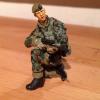

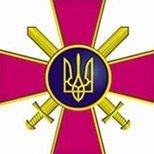

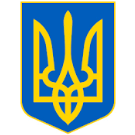
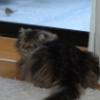
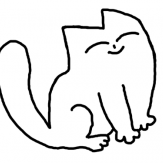
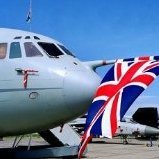
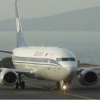
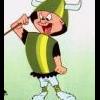
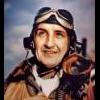
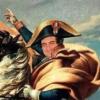
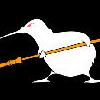
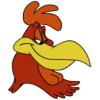
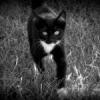


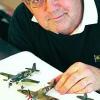
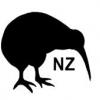
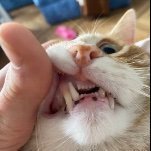

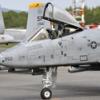



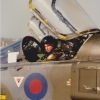
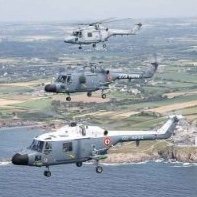
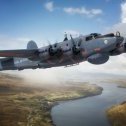
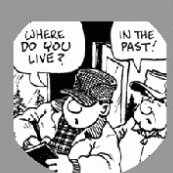
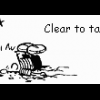
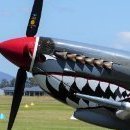


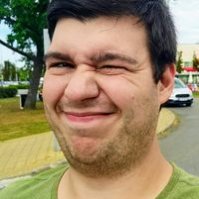
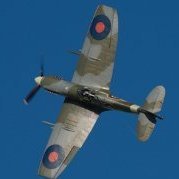

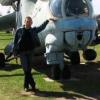
.thumb.jpg.76f12b87ce9ca9929c9aabdcf8f9d2dd.jpg)
